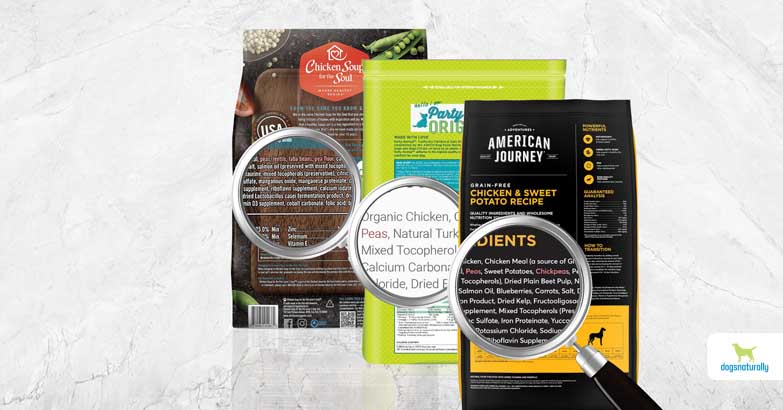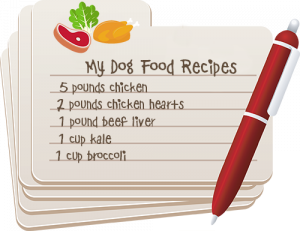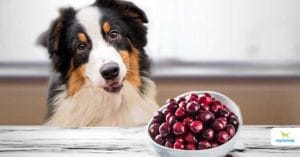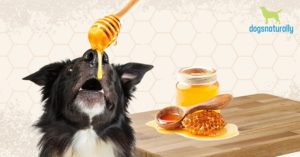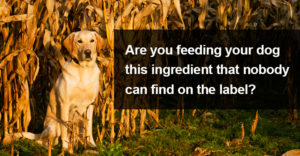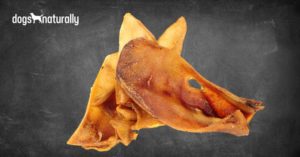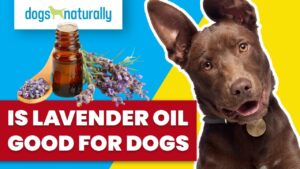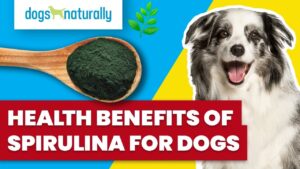Lectins are a controversial topic. Lectin foods can be rich in important nutrients … but they can also be harmful (1). That’s true for humans, anyway. But what about lectins in dog food?
There are several questions that come up when you consider lectins for dogs:
- Are high-lectin foods toxic for dogs?
- What health issues can lectins in dog food cause?
- What’s the link between lectins, grain-free dog diets, taurine and heart disease?
- What foods should your dog avoid?
Read on for the answer to those questions and more about lectins.
Top 5 Things To Know About Lectins
These are the most important points about lectins.
#1 What Are Lectins?
Lectins are plant proteins … and they can be toxic. In fact, they’re the plant’s defense mechanism. Since plants can’t escape predators, they have other ways of protecting themselves. Some have thorns, some have poisonous berries … and others have lectins. If a plant contains lectins, the person, animal or bug who eats it can get sick. So next time, they’ll probably avoid it! (2)
Lectins are sticky proteins that bind to carbohydrates. That means lectins make carbohydrates clump together. When your dog eats food with lectins, they look for the sugars and starches in his body and grab onto them. And when that happens, they stop your dog’s body from working properly. That’s why lectins are considered “antinutrients.”
What Are Antinutrients?
Antinutrients can interfere with digestive enzymes. They block the absorption of other nutrients like vitamins and minerals. This is part of the plant’s defense mechanism … antinutrients can deter predators from eating them. Some of the nutrients blocked by lectins include calcium, iron, phosphorus and zinc.
Lectins can also survive digestion. So they can get into the digestive tract and cause problems there too. They can cause digestive discomfort like gas, bloating, nausea or diarrhea. But digestive issues aren’t the only problem lectins can cause. (3)
Lectins can stop important cell communication. And your dog’s body responds with inflammation. Inflammation can make your dog more susceptible to disease and illness.
That’s not all. Remember lectins are “sticky” proteins? That means they can attach to harmful bacteria and viruses, helping them stick to cells in the body. So lectins could mean your dog is more likely to pick up infections. Some lectins are truly poisonous. Ricin contained in castor beans is a deadly poison. There are news stories about public figures receiving packages containing ricin to try to poison them.
And red kidney beans contain high levels of a lectin called phytohemagglutinin. This means it’s very dangerous to eat red kidney beans raw or undercooked. Even cooking them in a slow cooker is risky, because the temperatures aren’t high enough (lectin foods should be cooked at over 100C/212F for more than 30 minutes to inactivate the lectins).
But it’s not all bad …
Good Things Lectins Do
Despite all the negative press lectins get … they do have a good side. There are several classes of lectins … and they’re not all harmful. Here are some of the good things about lectins.
- Lectin antioxidants protect cells from damage caused by free radicals.
- They slow digestion and absorption of carbohydrates. This helps prevent blood sugar spikes and diabetes.
- They may reduce cardiovascular disease risk.
- They can promote weight loss.
- They’re rich in B vitamins, protein, and minerals.
- They’re a good source of fiber. When undigested fiber reaches the colon, it’s fermented by bacteria. This converts it to short chain fatty acids (SCFAs). SCFAs build immune cells and help protect the gut lining. Fiber as a prebiotic also feeds the good bacteria in the gut.
- They may be anti-cancer. Research shows some lectins may cause cancer cell death (4).
So, lectins aren’t all bad. But lectins can be bad for your dog … so which foods contain high levels of lectins?
#2 Where Are Lectins?
Lectins are in all foods, but the main problems are in plant foods. The main culprits are legumes and grains …
- Peanuts
- Cashews
- Lentils
- Lima beans
- Red kidney beans
- Peas
- Soybeans
- Fava beans
- Chickpeas
- Pinto beans
- Wheat
- Oats
- Barley
- Quinoa
- Rye
- Corn
- Millet
- Buckwheat
Harmful lectins are also in some other surprising places.
- Nightshade vegetables (potatoes, tomatoes, eggplant, peppers)
- Cow’s milk, yogurts and cheeses made with A1 milk (meaning most commercial milk)
GMOs In Lectins
Lectins are also in many genetically modified (GMO) foods. Remember lectins in plants can harm predators like insects? Well … GMO developers take advantage of that. They splice lectins into GMOs to increase their pest and fungus resistance. There are already many reasons to avoid feeding your dog GMOs … and lectins are another one.
Safe Lectin Foods
Lectins are in many plant foods. But some contain low levels of lectins that are not harmful. Lectins are not a concern in the foods listed below. The nutritional benefits outweigh the risks of low lectin amounts.
- Nut and seeds (chia, pumpkin, sunflower)
- Squashes (pumpkin, butternut or acorn squash, zucchini)
- Fruits (bananas, melons, goji berries)
- Green veggies (broccoli, Brussels sprouts, leafy greens)
#3 How Lectins In Dog Food Harm Your Dog
Earlier you saw some of the ways lectins in dog foods can damage your dog’s health. But here are some specifics.
Lectins Damage Your Dog’s Gut
Digestive problems are one of the most common effects of eating lectins. That’s their defensive nature again. They discourage being eaten by causing digestive distress. That could just mean a bit of gassiness, nausea or loose stool for your dog. Or it could be much worse. Because lectin survive digestion, they get into the gut. Research shows the harm they do there (1, 5)
- Interfering with nutrient digestion
- Damaging the cells in the gut lining
- Shifting bacterial flora, affecting your dog’s immune response
- Disrupting metabolism of fats, proteins and carbs
- Harming internal organs and tissues
- Altering hormones
These effects on the gut are the biggest problems with lectins. They can cause widespread havoc in your dog’s body … with leaky gut syndrome.
The cells in your dog’s gut lining usually stick close together. These tight junctions stop toxins from getting into your dog’s blood stream. But the cells can get damaged. This opens up the junctions between the cells, letting particles to pass through. This lets toxins, allergens, bacteria and yeast into the blood stream.
Leaky Gut Problems
Leaky gut can be at the root of many health issues for your dog, including …
- Food sensitivities
- Allergies
- Yeast
- Skin problems
- Arthritis
- Autoimmune disease (6, 7)
- Digestive diseases like IBS
- Liver or kidney issues
- Thyroid issues
- Behavior problems
As you can see, leaky gut is at the heart of a host of chronic health problems (8). So it’s really important to avoid it in your dog. Lectins in foods can be one of the biggest culprits. And with lectins, it’s a bit of a vicious circle. If your dog’s gut is damaged, it’ll be more sensitive to harm from any lectins he eats!
RELATED: Leaky gut in dogs: a growing epidemic
Grain-Free Dog Foods And Taurine Deficiencies
There’s been a lot of press about a possible link between grain-free foods and canine heart disease … specifically dilated cardiomyopathy (DCM). This started with a 2018 FDA announcement that they were investigating these foods. As of a November 2020 announcement, the investigation continues, without any real conclusions. The latest information was presented at a September 2020 forum hosted by Kansas State University. You can read some of the papers here.
So, what does this have to do with lectins?
Grain-free foods started as a marketing ploy by the pet food industry. Consumers realized that dogs don’t need grains in their diets. So they wanted grain-free foods. But you can’t make kibble without starch. That’s what holds it together. So the industry found an alternative starch … in the form of legumes and potatoes … which are high lectin foods. And they promoted these diets as grain-free.
DCM And Taurine
Grain-free foods are the main target of this FDA investigation. Taurine deficiency can be one cause of DCM. The FDA suspects these diets don’t provide sufficient taurine for dogs. But they do admit that there are many possible causes of DCM … so they haven’t pinpointed the reason for DCM cases. They’re not even sure it has anything to do with diet. But here’s a bit of history about taurine in pet foods.
Taurine In Pet Foods
The link between DCM and taurine was first discovered in cats in the 1970s. Cats were developing heart disease. That’s because, unlike dogs, cats can’t manufacture taurine. So they need it in their diets. They weren’t getting enough taurine from their starchy commercial diets. So manufacturers started adding taurine to the diets. Taurine is considered an essential amino acid for cats. So supplementing with taurine solved the problem.
Researchers later found some dog breeds had DCM caused by taurine deficiency. Newfoundlands, Golden Retrievers and American Cocker Spaniels all had DCM and low blood taurine levels. The dogs recovered when they were given taurine supplements. The history was summarized by Lisa Freeman DVM et al in an article in the Journal of the American Veterinary Medical Association (9)
So that’s why the FDA and other researchers think grain-free diets could be part of the problem. There could be something to that theory.
How Taurine Works In Dogs
Taurine is an amino acid. It’s considered non-essential for dogs … because they make taurine themselves. But to make taurine, your dog’s body needs two other amino acids: methionine and cysteine.
Methionine and cysteine are plentiful in many meats, as well as eggs and fish. So why would swapping grains for legumes and potatoes cause a taurine deficiency? There are lectins in grains too, aren’t there?
But here’s the difference.
Legumes Vs Grains In Dog Food
The grains in dog food do have lectins. But they’re low in protein. And legumes like lentils, peas or beans are much higher in protein than grains. So … adding these foods instead of grains allowed manufacturers to use more plant proteins. That allowed them to cut back on more expensive animal proteins. And the result is more lectins in dog food.
Using legumes isn’t just about marketing … it’s about bigger profits too. So because there’s less meat … these foods have lower levels of methionine and cysteine. And that means dogs don’t get these building blocks to make taurine. And it’s not just that there’s less methionine and cysteine in the food. The problem is compounded because …
- Lectins also stop dogs absorbing methionine and cysteine. Again, dogs need these to make taurine.
- AND … inflammation from lectins may stop dogs from producing taurine as well.
And there’s one more thing. You can deactivate lectins in foods by pressure cooking them. But pressure cooking also reduces taurine levels.
Do Lectins In Dog Food Cause DCM?
Well … the FDA is still investigating. And it appears they may have backed off the initial scare and it was all a false alarm.There’s good reason to be suspicious of the effects of these lectin foods on your dog’s taurine production. But poultry, beef, fish, eggs and organ meats are all rich in taurine. Feed your dog a diet with plenty of animal proteins … and he won’t have a taurine deficiency. (Sadly that doesn’t guarantee he won’t get DCM, because there could be other reasons for that.)
Lectins Increase Glyphosate Exposure
This isn’t a direct health effect of lectins. But it’s impossible to talk about lectins without considering it. Many high lectin foods are contaminated with the pesticide glyphosate (Roundup). Earlier we mentioned GMOs … and there’s some overlap. Many high-lectin grains and legumes are foods that are often genetically modified (GMO) … like wheat, corn or soy. And that means these crops are sprayed with the weedkiller glyphosate. But it’s not just GMOs. Other crops are sprayed with glyphosate as a dessicant, to dry them before harvesting. These include …
- Oats
- Wheat
- Legumes
- Barley
- Millet
- Potatoes
In fact, testing by researchers at HRI Labs shows the OWL foods are the very highest in glyphosate. OWL stands for oats, wheat and legumes. And those 3 categories include other grains like barley and rye … plus legumes like lentils, chickpeas and beans. These are all high-lectin foods.
HRI Labs has also shown that dogs have 30 times more glyphosate in their bodies than the average human! And even more than horses and cats. That’s likely because kibble contains massive levels of glyphosate. Kibble has 200 to 600 parts per billion (ppb) of glyphosate. That’s compared to raw dog food at only 5 ppb. So kibble-fed dogs are getting whopping amounts of glyphosate in their food.
Why Avoid Glyphosate
You don’t want your dog to eat glyphosate. The WHO has said that glyphosate is ….
- A probable human carcinogen
- A known animal carcinogen
So glyphosate can increase your dog’s risk of cancer … as well as many other effects on health (10, 11):
- Interferes with gut bacteria
- Damages the gut lining, causing leaky gut
- Harms kidney function, can cause kidney disease
- By disrupting gut bacteria, weakens the immune system
- Is linked to autoimmune disease and chronic inflammatory diseases
There are ways to deactivate or block lectins. But you can’t get glyphosate out of food. So glyphosate is another big reason to avoid giving your dog high-lectin foods. And raw dog foods have tiny amounts of glyphosate. So a raw diet is your best choice. If you do feed kibble, try to find one that’s organic. Organic foods have 95% less glyphosate.
So … what can you safely feed your dog to avoid lectins?
#4 What To Feed Your Dog
So what should you feed your dog? Focus on a meat-based diet. Most meats are low in lectins. And they have plenty of taurine, as well as other nutrients that support your dog’s health. If you’re already feeding a raw meat-based diet, your dog’s food will be low in lectins. Remember that pasture-raised meats are best if you can get (and afford) them. Animals fed a lot of grains could contain some lectins.
You can safely feed some fruits and veggies. They contain valuable nutrients that benefit your dog’s health.
Avoid These Foods
- Legumes
- Grains
- Nightshade veggies
- A1 dairy
Feed These Foods
- Raw meats and organ meats – pasture raised if possible
- Free range eggs
- Wild caught fish
- Berries
- Dark leafy vegetables
It’s best to try to avoid high-lectin foods in your dog’s diet. If you do give your dog some grains or legumes, or you feed a grain-free kibble … read how to limit the damage in the next section.
#5 How To Limit Lectin Damage
There are several ways to limit any damage lectins in dog foods may cause in your dog.
Pressure Cooking
Thoroughly pressure cook grains and legumes. Most lectins are deactivated by pressure cooking. Cooking this way also makes legumes and grains more easily digestible.
Peel And Seed
If you feed any nightshade vegetables (like tomatoes and peppers), peeling and de-seeding them removes most of the lectins.
Feed Lectin Blocking Foods
Certain foods can help block lectins. And lots of them are good for dogs.
Glucosamine-Rich Foods
For dogs, it’s great news that foods that contain glucosamine help block lectins. Because that gives them tons of choice! Glucosamine is naturally in lots of foods with cartilage. Here are some things you may already be giving your dog.
- Pigs feet
- Chicken, duck or turkey feet
- Green lipped mussels
- Beef trachea
- Beef knuckle bones
- Pig tails or oxtails
Feed these raw … or you can make them into a lovely gelatinous bone broth.
Shellfish Shells
Shellfish shells are rich in glucosamine. Dogs can eat things like shrimp shells and tails them raw or cooked. If you eat other shellfish with harder shells, like crab or lobster … save the shells and grind them up. You can add some of the ground shells to your dog’s food.
Cranberries (D-Mannose)
Cranberries are another wonderful lectin-blocking option. They contain D-Mannose which binds to lectins, especially from legumes. So give your dog some cranberries. They’re full of antioxidants and can even help prevent urinary tract infections.
Okra
Okra is a vegetable that’s rich in raw polysaccharide. It binds to lectins and stops them from harming your dog.
You can feed okra raw or cooked (sliced and roasted is a great crunchy option). Just don’t give your dog fried okra. You might love this dish yourself, but it’s way too fatty for your dog. And of course it’s made with flour, meaning more lectins!
Bladderwrack
This is a seaweed that’s a powerful way to block lectins. If you live on the Atlantic or Pacific coasts, you can find it at the beach and add it to your dog’s food. Otherwise, you can buy it in supplement form as described below.
And, speaking of supplements … there are a few that can help.
Supplements That Block Lectins
Here are a few supplements that can help protect your dog from lectin’s effects.
N-Acetyl Glucosamine (NAG)
NAG is a glucosamine supplement made from shellfish. It binds to lectins and helps stop them attaching to the gut lining. It also builds connective tissue like other forms of glucosamine. You can buy NAG supplements at health stores.
Give your dog 250 to 1000 mg daily, depending on his size.
Bladderwrack
As mentioned earlier, this is a seaweed that helps block lectins (12). But if you don’t live near a beach, you may not be able to find this seaweed in its fresh form. Luckily it’s available as a supplement at many health stores.
Bladderwrack also binds to heavy metals like mercury and helps remove them from the body. It’s rich in fiber and minerals too.
Dosing: If you’re giving the dried herb, you can feed sprinkle 25-250 mg per lb of your dog’s weight on his food. Or make a tea using 5-30g per cup of water. Give ¼ to ½ cup per 20 lbs weight. (Recommended dose from Veterinary Herbal Medicine by Susan G Wynn and Barbara J Fougere.)
Caution: Don’t use bladderwrack for pregnant or lactating females. Also, it contains natural iodine. So if your dog’s on any thyroid medication or supplements, ask your holistic vet about giving this herb.
Larch Arabinogalactan
Larch arabinogalactan is a prebiotic fiber that increases butyrate production in. your dog’s gut. Butyrate is a short chain fatty acid that’s anti-inflammatory and protect the gut lining. As a bonus, butyrate has also been shown to cause cancer cell death and slow cancer growth.
You can buy larch and give a medium sized dog about ½ tsp a day. Don’t give this every day of your dog’s life. It’s a good idea to give it for a couple of months, then give a 2 week break before restarting.
In summary …
Lectins can be harmful to your dog if you feed a lot of legumes or grains. You can manage the risks as explained. But it’s safer to feed your dog a fresh, whole food, meat-based diet and avoid the problem in the first place.
- Panacer K, Whorwell PJ. Dietary Lectin exclusion: The next big food trend?. World J Gastroenterol. 2019;25(24):2973-2976.
- Willy J.Peumans and EISJ.M. Van Damme. Lectins as PIant Defense Proteins. Laboratory for Phytopathology and Plant Protection, Katholieke Universiteit Leuven, Belgium.
- Ilka M Vasconcelos, José Tadeu A Oliveira, Antinutritional properties of plant lectins. Toxicon, Volume 44, Issue 4, 2004, Pages 385-403, ISSN 0041-0101
- Lei-lei Fu et al. Plant lectins: Targeting programmed cell death pathways as antitumor agents. The International Journal of Biochemistry & Cell Biology, Volume 43, Issue 10, 2011.
- Kik MJ, Rojer JM, Mouwen JM, Koninkx JF, van Dijk JE, van der Hage MH. The interaction between plant lectins and the small intestinal epithelium: a primary cause of intestinal disturbance. Vet Q. 1989 Apr;11(2):108-15.
- Vojdani A, Afar D, Vojdani E. Reaction of Lectin-Specific Antibody with Human Tissue: Possible Contributions to Autoimmunity. J Immunol Res. 2020 Feb 11;2020:1438957.
- Vojdani A. Lectins, agglutinins, and their roles in autoimmune reactivities. Altern Ther Health Med. 2015;21 Suppl 1:46-51. PMID: 25599185.
- Guinane CM, Cotter PD. Role of the gut microbiota in health and chronic gastrointestinal disease: understanding a hidden metabolic organ. Therap Adv Gastroenterol. 2013;6(4):295-308.
- Freeman, L. M., Stern, J. A., Fries, R., Adin, D. B., & Rush, J. E. (2018). Diet-associated dilated cardiomyopathy in dogs: what do we know? Journal of the American Veterinary Medical Association, 253(11), 1390-1394.
- Myers JP, Antoniou MN et al. Concerns over use of glyphosate-based herbicides and risks associated with exposures: a consensus statement. Environ Health. 2016 Feb 17;15:19.
- Van Bruggen AHC, He MM et al. Environmental and health effects of the herbicide glyphosate. Sci Total Environ. 2018 Mar;616-617:255-268.
- de Punder, Karin, and Leo Pruimboom. The Dietary Intake of Wheat and Other Cereal Grains and Their Role in Inflammation. Nutrients, vol. 5, no. 3, 12 Mar. 2013, pp. 771–778.,
- M.T. Criado, C.M. Ferreiros, Selective interaction of a Fucus vesiculosus lectin-like mucopolysaccharide with several Candida species. Annales de l’Institut Pasteur / Microbiologie, Volume 134, Issue 2, Supplement A, 1983.

